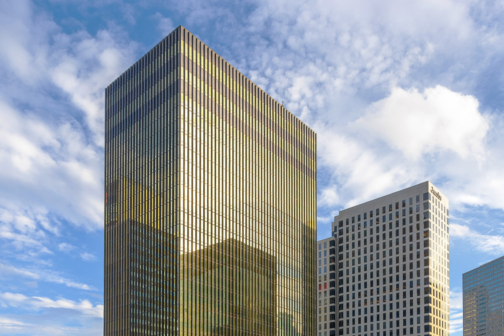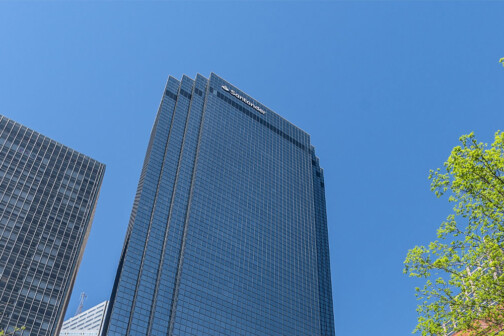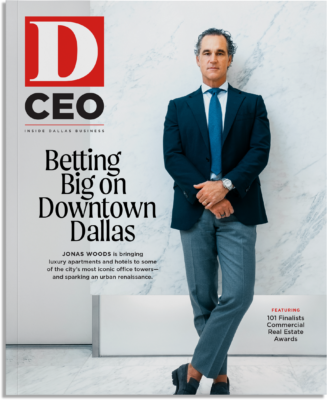In 2007, investor and developer Jonas Woods was at a party for elementary school parents when he and some other dads struck up a conversation with hedge fund manager Kyle Bass. After a wildly impressive career with Ross Perot Jr.’s Hillwood, Woods had recently left to launch his own firm. His plan was to develop vertical mixed-use projects, and he had two land sites under contract in the Dallas Arts District and Design District. One of the dads asked Bass about his mortgage credit fund. “It was like pressing play for a 20-minute diatribe,” Woods says. “Kyle walked us through his take—and he can do it in excruciating detail because he’s brilliant—on what was going to happen in the residential mortgage space, to the debt markets in general, the credit markets in general, then to the U.S. economy and the global economy. It was this sort of Contagion story of how bad things were going to get.”
Woods told Bass, “If you’re right, then what I’m about to do is a really bad idea.” Bass agreed that it was. After additional discussions, Woods ended up canceling the contracts and completely changing course, joining Bass in 2008 to form Hayman Woods and buy distressed real estate assets. (That same year, Bass became famous for forecasting the mortgage crash and making a fortune by purchasing credit default swaps on subprime securities.) Hayman Woods’ first fund targeted a variety of residential real estate assets, including land but excluding single-family. A second fund focused on newer multifamily properties in secondary markets. “You could get a huge debt cap rate spread that you could take advantage of in those markets; we bought more than $100 million in assets,” Woods says. “And then cap rates compressed so much, we were in the money in a material way.”
Woods, Bass, and their investors cashed out, and Woods teamed up with one of the fund’s largest players, Dan Loeb, to buy Thanksgiving Tower after lenders foreclosed on the 50-story office high-rise in downtown Dallas. Woods had spent a lot of time analyzing the downtown office market when he worked on Victory Park for Perot. Back in that 2005-2006 timeframe, there was a lot of ambitious talk circulating about urban residential growth and adaptive reuse or demolition of vacant buildings. By 2012, those things were beginning to come to fruition.
“Tim Headington was having incredible success with The Joule, which became catalytic for Main Street,” Woods says. “A lot of positive things had happened. But no one had taken an old, architecturally significant office building like Thanksgiving Tower and made a real investment to reposition it as a best-in-class asset.” Instead, investors were buying struggling office buildings on the cheap and trying to compete with the shiny new buildings in Uptown purely on cost. “We found in our analysis that was a ‘catch the falling knife’ endeavor,” Woods says.
He acquired Thanksgiving Tower for $70 million then pumped more than $45 million into a complete overhaul, from common areas to building systems and infrastructure. The plan was to deliver an office building that favorably compared in quality to options in Uptown. And it worked. “We doubled rents and established Thanksgiving Tower (now rebranded as Santander Tower) as one of the premier assets in the whole region,” Woods says. “We were back on the downtown train in a big way.”
Then came another big validation moment; Woods was approached by The Guild to do a 60-key hotel on the top two floors of the tower. The rooms are consistent with studios, one-bedroom, and two-bedroom apartments. Woods liked the business plan and saw it as an opportunity to learn about the costs and utilization of floorplates for potential residential use. Meantime, Todd Interests’ redo of The National was an immediate hit, with a Thompson Hotel and luxury multifamily units that were getting rents of $3.50 per square foot. A new Fountain Place apartment tower was filling up and commanding top rents, too.
It convinced Woods to go all in. On Jan. 1, 2022, he recapitalized his various partnerships into one holding company called Pacific Elm Properties. Its portfolio includes six Class A office towers totaling 6.2 million square feet—including Bryan Tower and Comerica Tower, both acquired last year—and nine acres of land in Uptown and downtown. (Woods was scheduled to close on a seventh tower as D CEO went to press.) Between the two 2022 buys and Santander Tower, he will add about 1,000 new multifamily units in the core of downtown Dallas. (See sidebar.)
With his endeavors and what a few other owners are doing, Woods says about 4 million square feet of residential conversions are underway in the urban core—projects that will cut downtown office vacancy in half and bring as many as 4,000 to 5,000 new residents to a small geographic area of the city in the next two years or so. “I think it could be the single biggest sea change event that Dallas has ever witnessed,” Woods says. “It will create a residential neighborhood that is vibrant and thriving—and that’s exactly the kind of environment that office tenants want to be in.”
A Commitment to Placemaking
Last year, Jonas Woods formed Pacific Elm Properties under Woods Capital to focus on urban projects. Here are three office-to-residential conversions underway.
Pacific Elm acquired
this 1.2 million-square-foot tower, built by Trammell Crow Co., last year. It’s being transformed into 526 apartments, 580,000 square feet of office space, and an 800-space parking garage.
2001 Bryan St.
40 stories | Built in 1987

Comerica Bank Tower was acquired by Pacific Elm. The 1.6 million-square-foot tower was acquired by Pacific Elm in 2022. Plans call for a significant renovation and converting 600,000 square feet of office space into 230 multifamily units and 150 luxury hotel rooms.
1717 Main St.
60 stories | Built in 1987

After giving this 1.4 million-square-foot building formerly known as Thanksgiving Tower a major redo in 2016 and adding a boutique hotel, Pacific Elm is converting 14 floors of office space into 291 apartments.
1601 Elm St.
50 stories | Built in 1982

Get the D CEO Newsletter
Author







